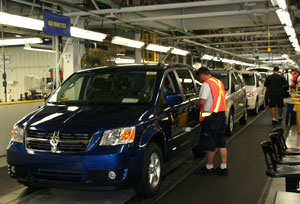
The U.S. auto industry has cut fossil-fuel use 12% and reduced greenhouse gases by more than 700,000 tons (635,000 t) of carbon dioxide through the U.S. Environmental Protection Agency’s Energy Star program.
A report by the Nicholas Institute for Environmental Policy Solutions at Duke University says the reductions equal the emissions generated in producing the electricity used by more than 80,000 households for a year.
The report also shows the gap between the top-performing vehicle assembly plants and other lower-performing factories has narrowed, as the industry as a whole has improved, the EPA says in a statement.
The auto industry is the first sector covered by the EPA’s Energy Performance Indicator (EPI), which allows the industry to benchmark plant-energy performance against peers and over time.
The first EPI was developed for vehicle-assembly facilities using data from 2000 and was updated a second time with 2005 as the base year.
The EPI estimates the energy use of “best-in-class” plants and the range of performance across the industry.
“We find that electricity use per vehicle in the best plants improved by 2%, while the fuel use per vehicle improved a dramatic 12%,” the report says. “These changes resulted in a reduction of 696 million lbs. (316 million kg) of CO2 emissions at the plants used for this study.
“The range of performance in fuel use has also narrowed over time, implying that other plants have been catching up to the best-in-class. This (has contributed) a reduction of another 766 million lbs. (347 million kg) of CO2, for a total reduction of nearly 1.5 billion lbs. (680 million kg)”
EPI tools are available or under development for more than 20 other industries, and the list is growing.





